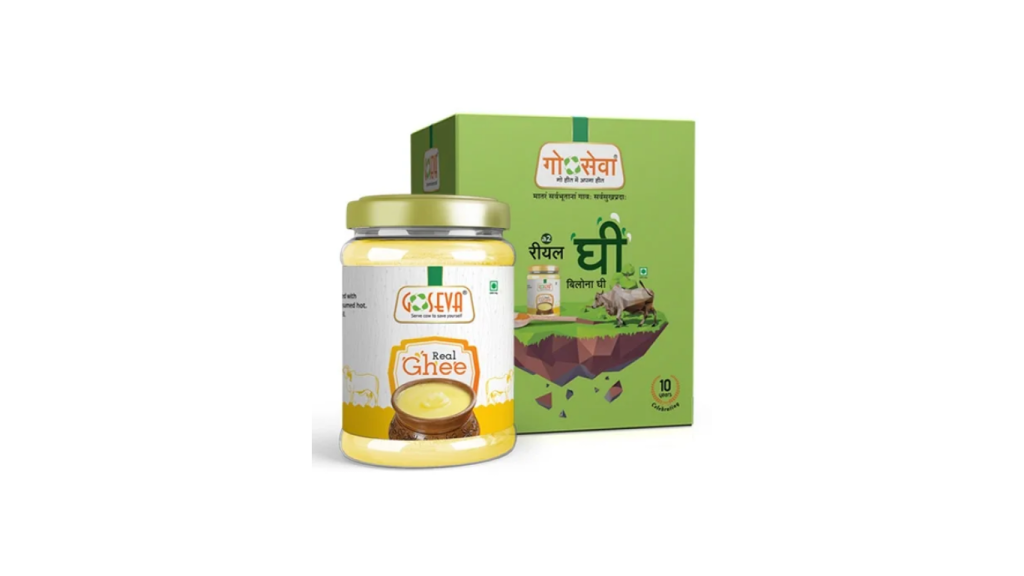Gir cows are a native Indian breed, especially from Gujarat, known for their robustness and the quality of milk they produce. The ghee that comes from them is often labelled Gir Cow Ghee, meaning the milk has mostly the A2 type of beta-casein protein. Folks who are a bit sensitive to dairy often say A2 milk or ghee causes less bloating, feels gentler on the belly. The process of making Gir cow ghee often follows traditional methods — curd-making, churning (sometimes bilona), slow heating. These methods preserve aroma, flavour, and more of the good stuff.
Flavor, Aroma & Culinary Vibes
If you open a real jar of Gir Cow Ghee, there’s something unmistakable: that rich, nutty aroma, almost caramel-honey undertones, a golden glow. When you use it in tadka (tempering), or finish a curry, or simply spread a little on warm rotis or rice, it elevates the whole dish. It doesn’t overpower, but adds warmth, depth. I once replaced my usual cooking fat with Gir Cow Ghee for a week in my regular meals — dal, sabzi, chapati — and even though I used less, the taste felt more “complete.” Cooking with such ghee almost feels like you’re cooking with care, not just function.
Health Claims & What Seems Likely
People talk about many benefits: better digestion (less heaviness after meals), improved gut lining, stronger immune response, even glowing skin. There are also those fat-soluble vitamins (A, D, E, K) present in ghee, which help absorption of nutrients. There’s something about butyric acid (a short chain fatty acid) in ghee that’s often mentioned; it’s good for gut health and reducing inflammation. Some also say it supports bones because when digestion is smooth, minerals like calcium are absorbed better.
Ayurveda has long praised Gir cow ghee for balancing doshas (Vata, Pitta, Kapha), for improving ojas (vitality), for enhancing memory and mind-clarity. Whether or not all this is strictly proven in large human trials, many people I know, myself included, do feel a subtle difference when using good quality gir ghee instead of more processed fats.
What to Be Mindful Of
Even though Gir Cow Ghee has many positives, it’s not a magic cure. It’s rich in fats, especially saturated fats. If your overall diet is already heavy in fats or cholesterol, adding a lot of ghee can push it over a limit. Also, “gir cow ghee” label doesn’t always guarantee top quality. How the cow is raised, what it eats (grass-fed vs not), how the ghee is processed (slow vs fast heating, clean vs impure storage) all affect final quality: flavor, nutrition, aroma. Price is often higher, for good reason, but sometimes people pay and get less than expected.
My Experience with Gir Cow Ghee
I tried using Gir Cow Ghee from that link: Gir Cow Ghee for about two weeks, in my everyday meals. I replaced oil or butter for certain dishes. What I noticed first was the smell — cooking felt more pleasant, more comforting. After meals, I felt less heavy, fewer burps or that “ugh I overate” feeling. Taste felt richer, more satisfying. Did it heal me or turn me into a superhuman? No. But it did make regular food feel more special, more nourishing.
Should You Try It
If you like cooking, appreciate flavour, want something a bit more wholesome in your kitchen, Gir Cow Ghee is worth trying. If budget allows, buy a small jar of something labelled true A2 Gir Cow Ghee (like the one in your link), use it for special dishes, finishing touches, or where its flavour matters. Use little so that it doesn’t become too heavy on cost or on health. If you don’t notice big changes, that’s okay — taste and enjoyment alone are valuable.


